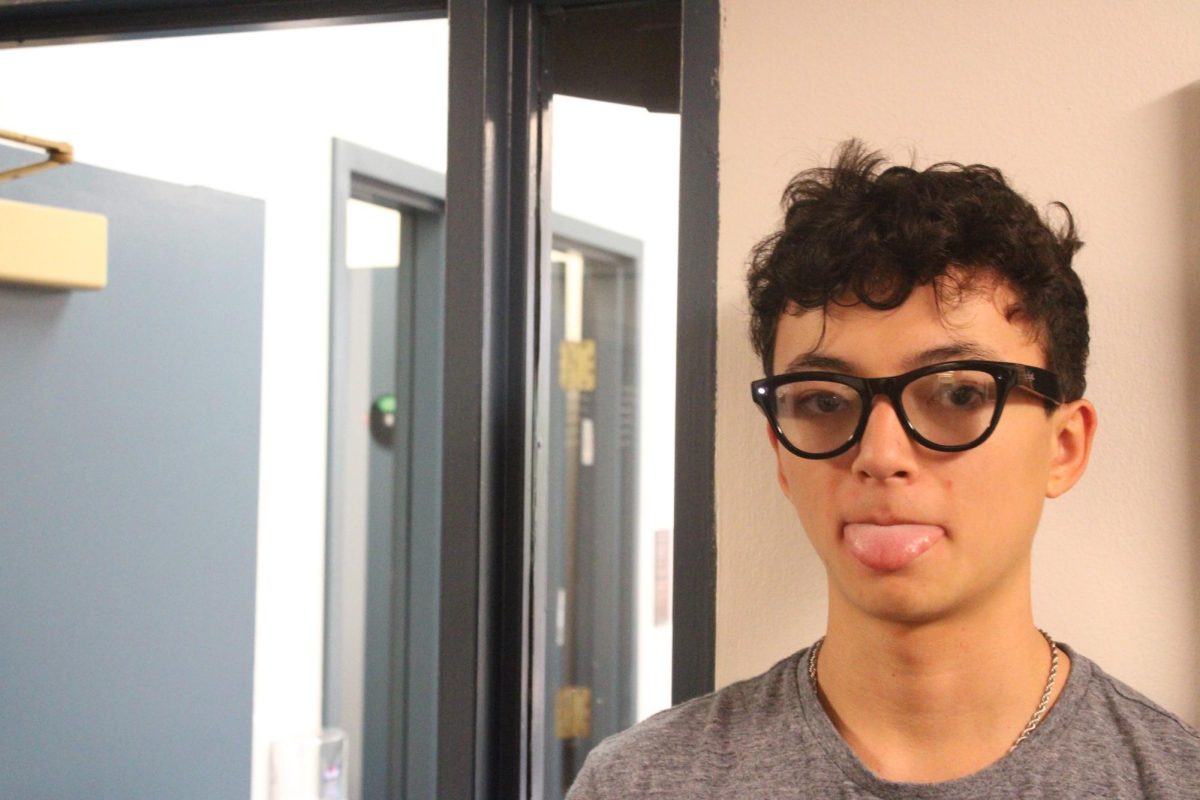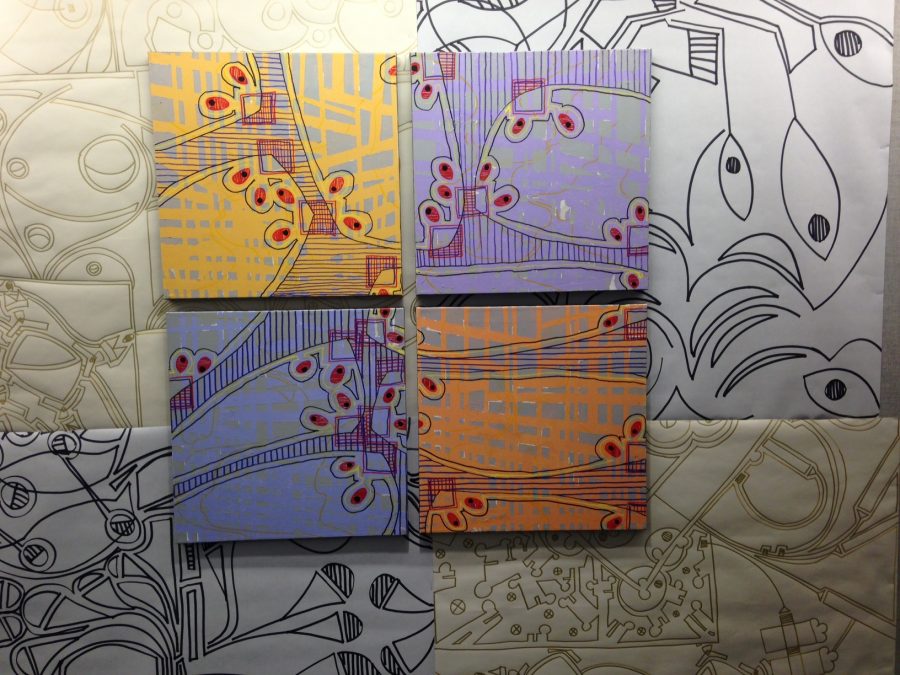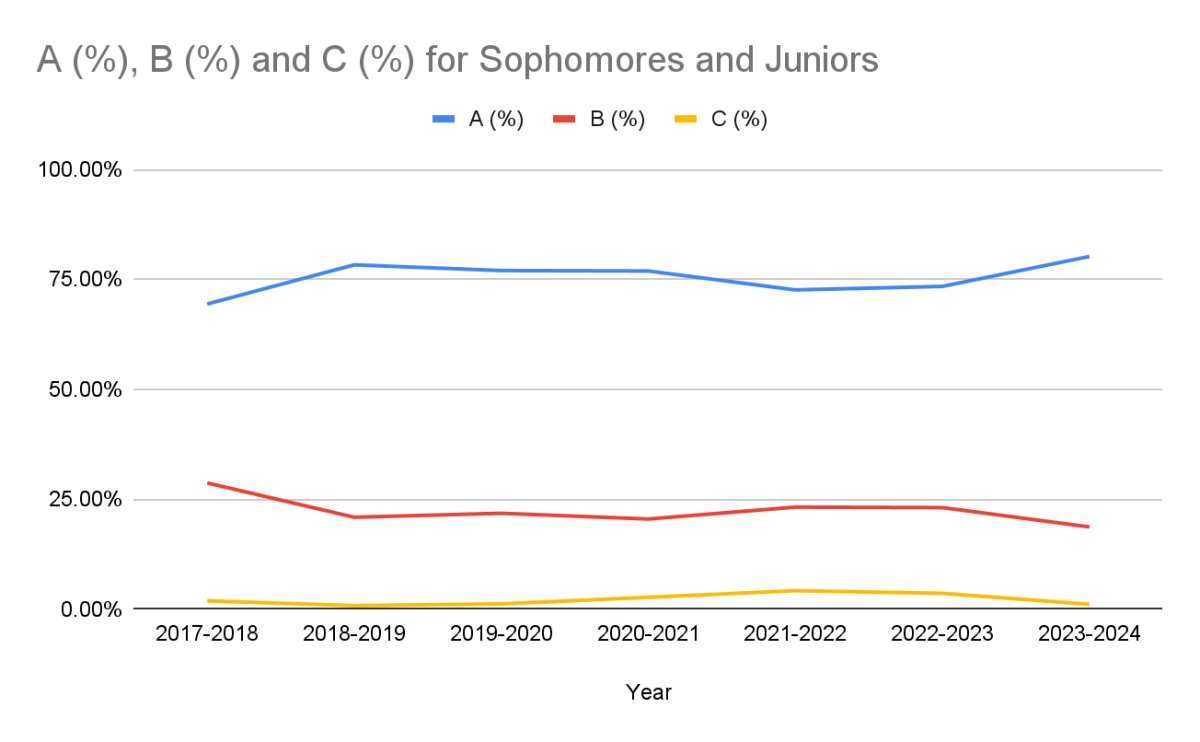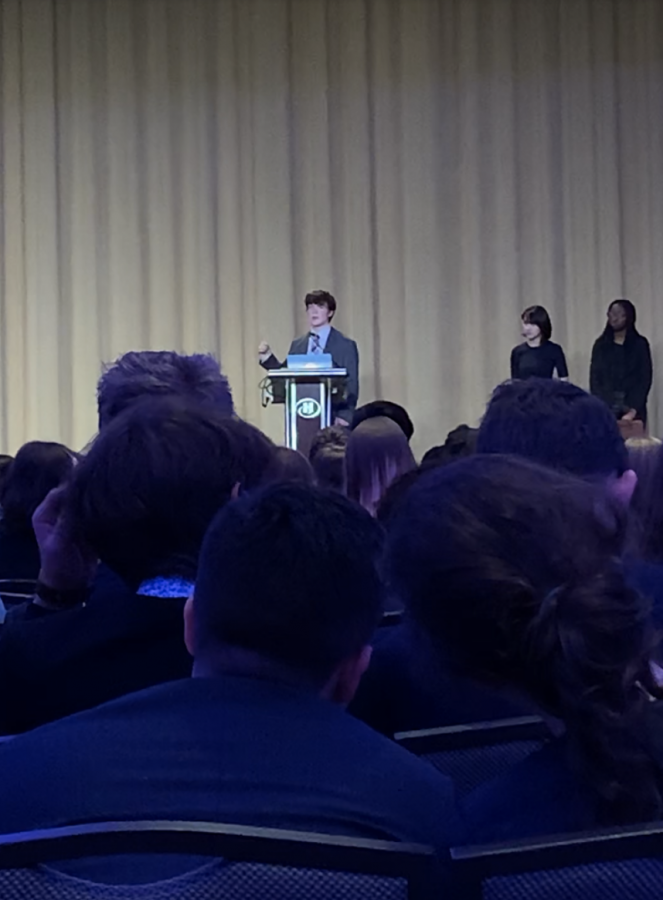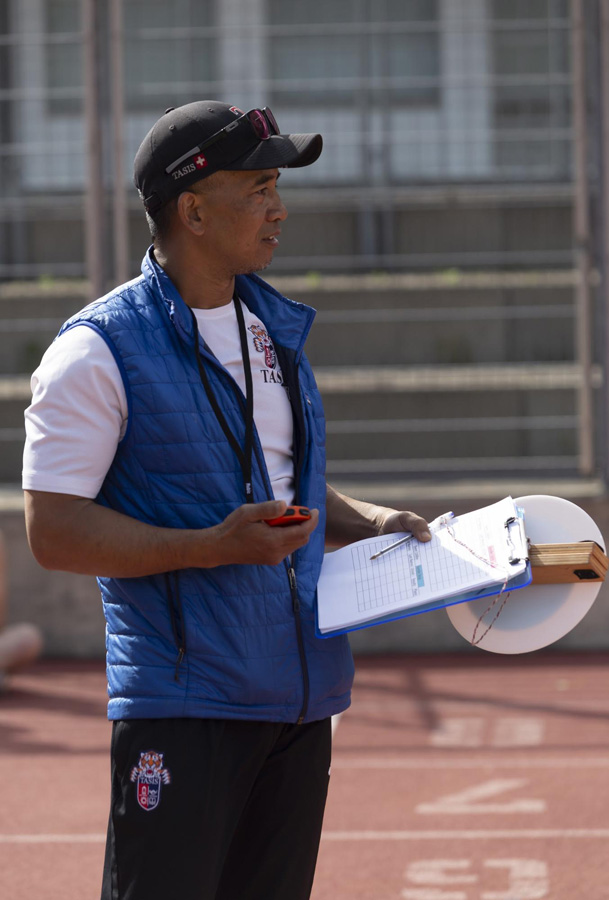Olivia Baker We all do it. Our pencils touch the paper, and our brains and hands heedlessly doodle. These simple marks on a piece of paper are rarely ever completed and often occur in times of boredom. Mr. Marshall, upper school English and History teacher, has been doodling “for as long as I can remember.” Marshall’s most recent gallery, which was open last week, consisted of his doodles, which, contrary to the popular technique of simply drawing, are various canvases of paint and abstract design. What many don’t know, however, is that these astounding, metaphysical pieces started off just like our doodles: from a mere touch of a pencil to a piece of paper. Mr. Marshall has always been sort of a “doodler.” His father was a doctor but also a water-color painter, and he exposed Mr. Marshall to art at a young age. Though his father was not the motivation for Mr. Marshall’s doodles, his father’s love for art helped Mr. Marshall learn “early on that art is tremendous fun.” Indeed, art has always been a part of Mr. Marshall’s life. Though he has yet to gain wide publicity as a painter, he has held three gallery showings at Latin from 2006 to now, and he has not only sold pieces from Latin’s presentations but has also sold his artwork online as well. “I don’t put any effort into promoting my creative work,” said Mr. Marshall, and thus he hasn’t “achieved any notoriety either.” Obviously artistic notoriety is not Mr. Marshall’s main concern, as he refers to doodling as “not a hobby so much as a compulsion” and an “automatic” ability rather than a practiced one. He finds time to doodle in times of boredom and when he is waiting for appointments. However, interestingly enough, he does most of his doodling when people are talking, especially, though he “probably shouldn’t say this,” during faculty meetings. Although he certainly isn’t promoting doodling during class, Mr. Marshall says, “I like to think having something physical to do helps me listen to what’s being said. It keeps other distractions quiet. The paintings and more finished art I do on my own, sometimes by expanding or developing the paper doodles, sometimes as a relaxing and meditative way to spend a few hours.” And according to the Wall Street Journal, doodling can actually improve one’s focusing abilities. Maybe we should all follow Mr. Marshall and become avid doodlers—that is, when our teachers aren’t looking. When questioned on the creative process of constructing his paintings, Mr. Marshall replied with the following routine: “I settle on a pattern or a process and pursue it, then I change the rules I’ve given myself and create another layer, work in another color, or embellish an area I’m unhappy with. It’s a series of decisions, really…It’s not always easy (and maybe not productive) to define what my pieces are. I enjoy making them, and that’s the important part.” Though his paintings might suggest otherwise, Mr. Marshall hasn’t always been successful in his pieces. His paintings begin as mere doodles in his sketchbook, and once he makes a mistake, he considers his piece not a work of art and sometimes “a worthless piece of garbage.” Despite his flaws, he could never bring himself to throw the paintings away. Furthermore, Mr. Marshall tries to keep working because sometimes the next thing he tries redeems a previous mistake. But sometimes not. You wouldn’t think one could fail when you’re painting or drawing abstracts, but apparently one can. Experimentation just works that way. The outcome is unsure until the piece is completed. Though a teacher of literature, Mr. Marshall claims to “think in imagery,” as he carries in his brain “lines and shapes and forms and patterns” as fashion designers carry manifestations of clothing items. To him, writing and art are in a sense the same. “Writing can be another sort of doodling, particularly when you set out not really knowing (or even caring) where your mind is going,” he said. “When you create with the intention simply to explore, both in doodling and in writing, you can end up somewhere that surprises even you. What you do with your discoveries is another level of creation—just as a doodle might lead to something more polished and intentional and complete for me—but some part of creation is always trying to find out what you know without realizing it.” To Mr. Marshall, doodling “is holding rational thinking at bay and just making marks.” Teachers may urge us to pay attention, take diligent notes, and be fully engaged, but maybe once in awhile, take those letters and create them into abstract shapes no one has a name for, or draw something that speaks to your spirit. After all, Mr. Marshall, the wisest doodler of them all says that “visual art isn’t always about skill. Anyone who has an imagination—which is everyone—can do it on some level and, if they’re not too hard on themselves, enjoy it. Anyone can doodle.”]]>
Categories:
Mr. Marshall's Gallery Exhibition and the Importance of Doodling
February 3, 2016
0
More to Discover





